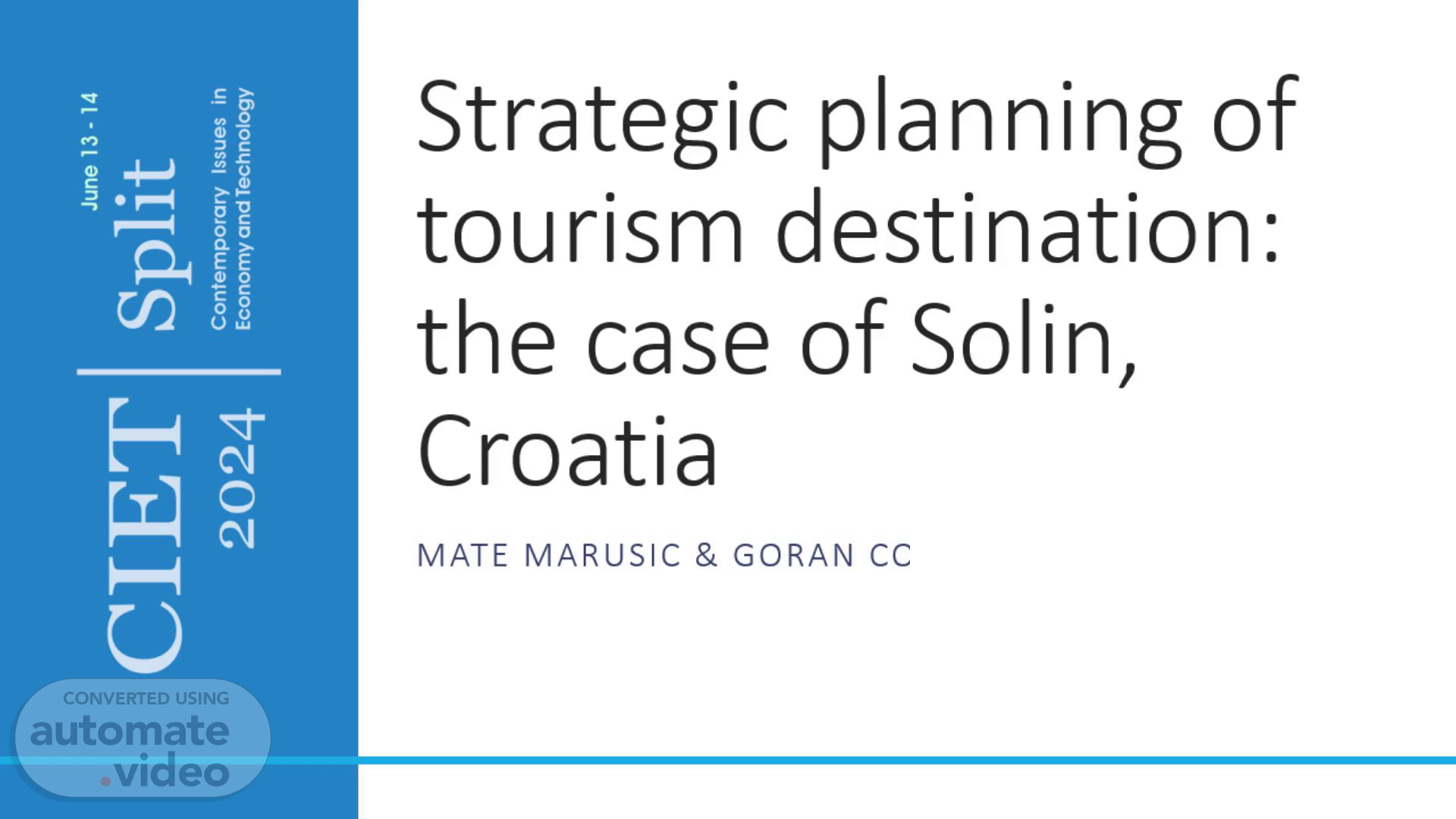
Strategic planning of tourism destination: the case of Solin, Croatia
Scene 1 (0s)
Strategic planning of tourism destination: the case of Solin, Croatia.
Scene 2 (8s)
Table of content. Introduction Literature review Case study: The city of Solin Conclusion.
Scene 3 (17s)
1. Introduction. Strategic planning is foundation of every successful destination, it provides various perspectives for local communities, ensures the protection of environmental and cultural resources, and protects the destination from being overwhelmed by the tourism industry. Colin Michael Hall (2008) Tourism can have some destructive effects on the economy of the visited country, because when the number of tourists in a country increase, the supply of goods and services often does not increase accordingly. This can lead to inflation and a balance of payments problem in the long run. Richard Sharpley (2014).
Scene 4 (42s)
2. Literature review. The UNWTO mentioned that “the lack of planning is responsible for most of the negative outcomes of tourism development” H. Igor Ansoff (2018) Partnership between the private and public sectors is a necessity to create sustainable destinations. Robin Nunkoo & Vivek A Sunnassee (2021).
Scene 5 (59s)
3. Case study: The city of Solin. A little town in central Dalmatia, Solin has a long history that begins in the third century BC, when Salona, a city in the Roman Empire, had an astonishing 60,000 residents. With its rich history, inherited cultural heritage and numerous interesting tourist resources, there is an obvious need for intensive tourism development in Solin..
Scene 6 (1m 19s)
3. Case study: The city of Solin. Analysis of tourist resources.
Scene 7 (1m 36s)
3. Case study: The city of Solin. Type of accommodation facility Number of accommodations Number of rooms Number of visitors Hotels 2 127 21630 Family accommodation 295 1404 11089 Total 297 1531 32719.
Scene 8 (1m 49s)
3. Case study: The city of Solin. Demand analysis.
Scene 9 (2m 10s)
3. Case study: The city of Solin. • • strengths Vibrant cultural and historical heritage Natural value of the river Jadro Hard-working and hospitable population • weaknesses Ownership of plots inside the Salona Salona is not included in the UNESCO list of cultural heritage Lack of educated tourist staff opportunities Close to Split and Trogir. whose heritage is protected by UNESCO • increase in demand in spring and autumn Use of renewable energy sources • • threats The hollow church is within the boundaries of the municipalities of Klis and Solin Depopulation trends in Croatia Non-compliance withs atial lans.
Scene 10 (2m 27s)
3. Case study: The city of Solin. Strategic goals:.
Scene 11 (2m 56s)
4. Conclusion. To conclude, the tourism industry's growing rapidly and tourists every day have higher expectations. Tourism must be strategic planned to ensure services that fits this heavy demand..
Scene 12 (3m 11s)
ino.